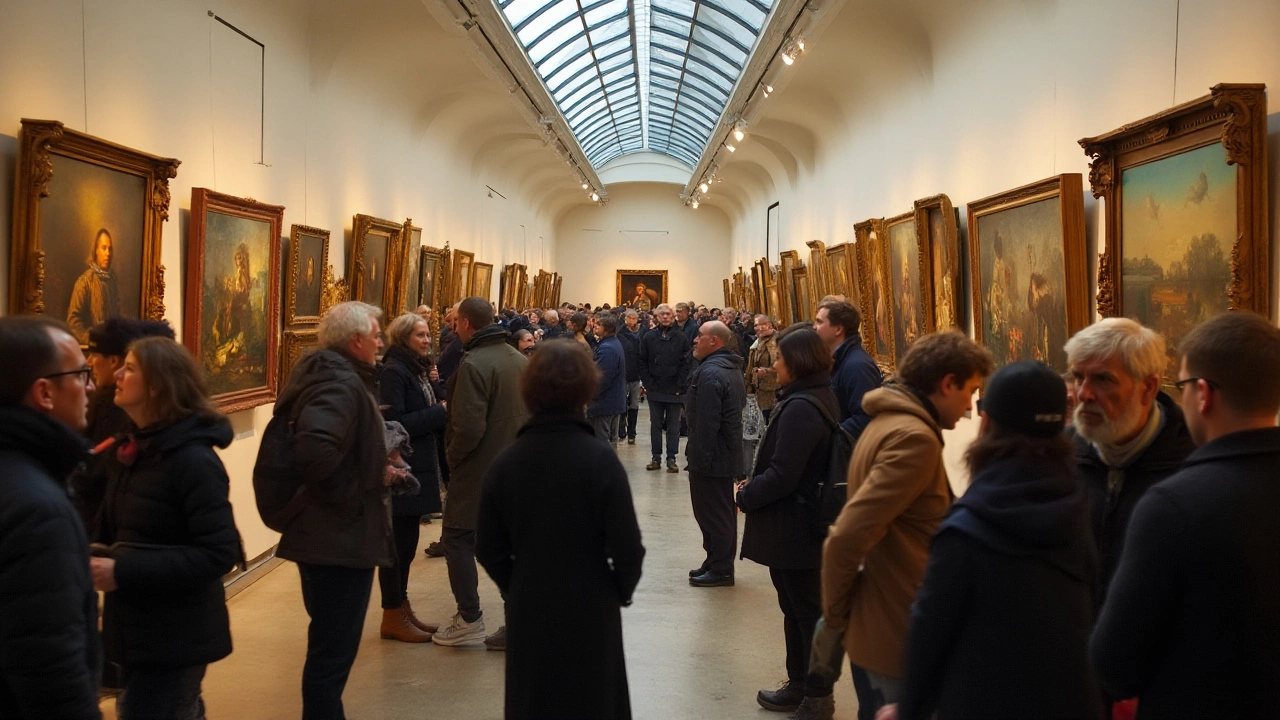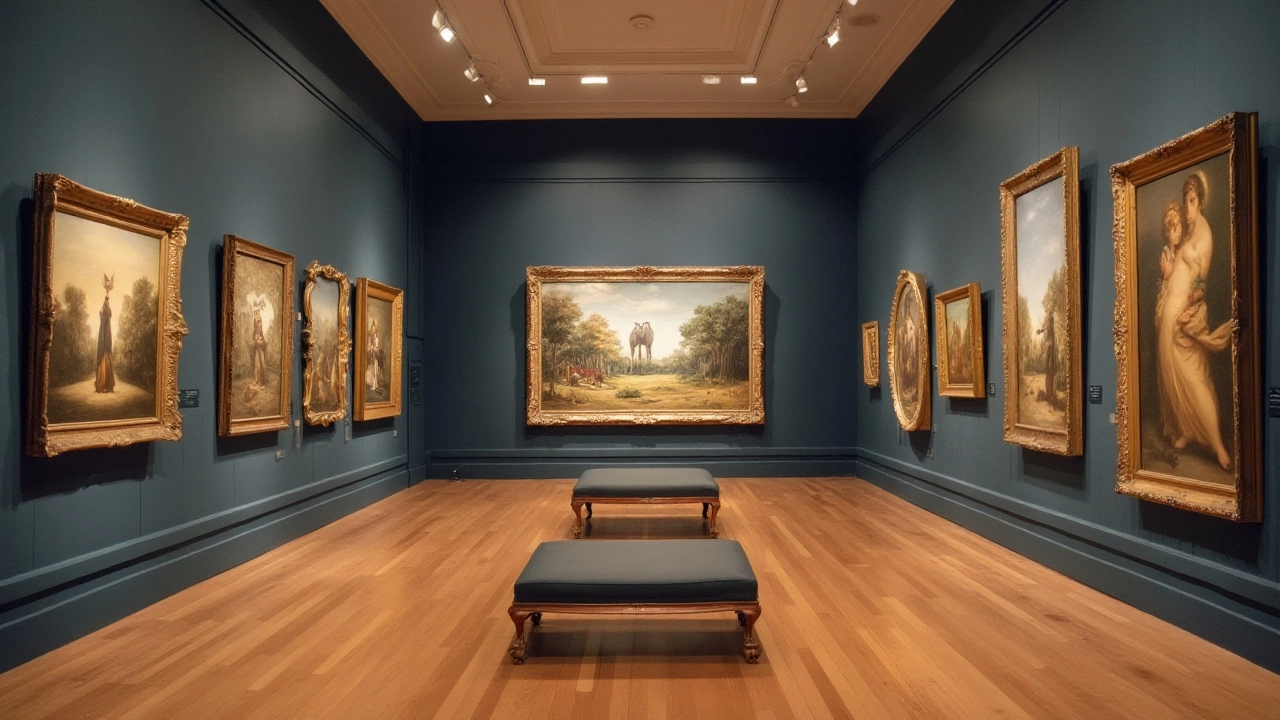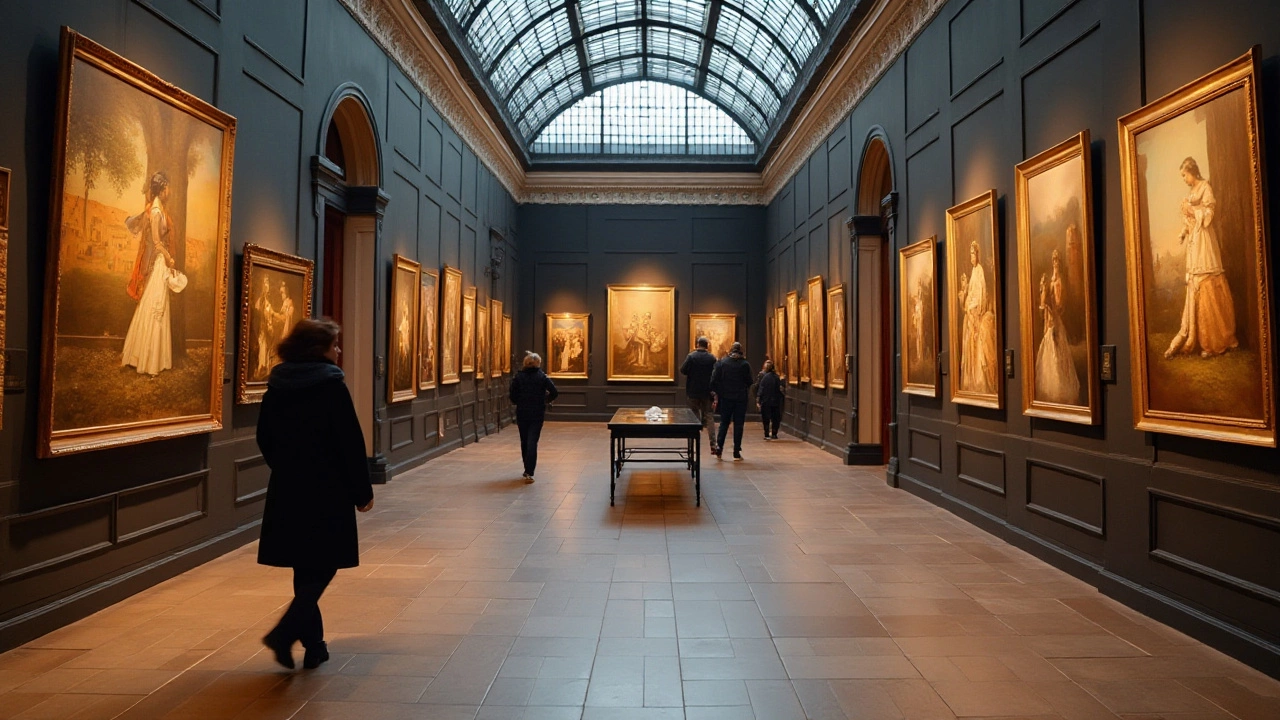Organizing an art exhibition is a thrilling venture that involves more than just the visual appeal of the artwork. It calls for careful planning, and one crucial component is deciding how many paintings are required to fill the space effectively. Whether you’re a seasoned curator or an emerging artist, understanding the dynamics of your display can significantly enhance its impact.
The question of quantity isn't just about numbers; it's about how those numbers play into the ambiance, narrative, and overall visitor experience. Considerations such as the venue size, the thematic essence of the collection, and the expectations of your intended audience all play crucial roles in shaping your decision. An exhibition should feel balanced, neither overwhelming nor sparse, but just right to hold the attention and imagination of all who wander its corridors.
- Determining the Right Number of Paintings
- Factors Influencing Exhibition Size
- Creative Display Strategies
- Tips for a Successful Exhibition
Determining the Right Number of Paintings
When planning an art exhibition, an obvious yet critical question is how many paintings should be included. This decision is pivotal as it sets the stage for both the visual and thematic coherence of the exhibition. The number of paintings can vary significantly depending on several factors, including the size of the venue, the style and medium of the works, and the overall narrative you aim to communicate through your art show. For a small, intimate gallery, fewer pieces might allow each work to breathe, giving the audience space to appreciate each one deeply. In contrast, a larger, more expansive venue might demand a more substantial collection to avoid an impression of emptiness.
Each venue also offers specific layouts and unique characteristics influencing how artwork interacts with the space. It's intriguing to note that the typical gallery may need fewer pieces than initially presumed, as each work needs enough room to stand out without being overshadowed by its neighbors. The idea here is to maintain balance, ensuring every piece contributes to a cohesive visual journey. Understandably, this calls for an awareness of how each painting contributes to the exhibition's broader theme and story.
More practically, consider the walls’ linear feet available for hanging. This calculation often requires defining how much space each artwork needs. Generally, this involves considering not just the dimensions of each painting but the desired spacing between pieces, which can vary depending on the impact you wish to create. A rough guideline might suggest that spacing of around 18 inches to 24 inches between works is ideal in a typical setting, allowing for a focused view and a moment to step back and ponder. Consequently, calculating these variables against the total wall space can give you a ballpark figure for the number of pieces you could include.
"One should leave empty spaces to provide repose for the eye," suggests Maria Lind, an influential figure in the art world. This wisdom highlights that negative space in an exhibition is as vital as the displayed art itself, offering a moment of pause for viewers navigating the gallery.
Another factor to contemplate is whether you'll introduce new work or feature established pieces that audiences might already be familiar with. Either choice has value and can dictate how many paintings resonate with your display strategy. Introducing lesser-known or debut pieces may warrant a more concentrated collection, seeking to direct attention effectively and create new audiences' connections.
Finally, consider the exhibition’s goals: Are you showcasing one artist or several? Is it a solo collection or a blend of diverse styles? These questions inevitably influence the number of paintings as well. For a solo exhibition, the volume of works might reflect the artist's range and evolution, necessitating a more extensive assembly. In contrast, group exhibitions may benefit from including fewer pieces per artist to allow equal prominence across the board.
Implications for Successful Curation
Deciding the count for an exhibition might seem daunting, but it is an exercise in creativity as well as logistics. It helps to remember that quality triumphs quantity. A thoughtfully curated number of well-chosen pieces can create an impactful and memorable event. Effective curation is about ensuring no part of the exhibition feels redundant; each piece should warrant its place on the wall. Ultimately, it's the cohesive narrative that guides a viewer's experience that determines the success of the gallery display.

Factors Influencing Exhibition Size
When planning an art exhibition, the number of paintings you choose to display can significantly affect the visitor's experience. The size of the exhibition is often dictated by the venue's physical constraints, but it's not solely about filling the space. The architectural layout, lighting, and flow of foot traffic must also be considered, as they dramatically shape how the art is perceived and appreciated. It is essential to strike a balance between maximizing the space available and ensuring that each piece of artwork has room to breathe, so there is no visual clutter or competition for attention.
Another key consideration is the thematic or narrative structure of the exhibition. A cohesive theme can help determine the number of paintings required, as each piece should contribute effectively to the story being told. For instance, a retrospective on a particular artist might necessitate more works to showcase different phases and evolutions in their career. In contrast, a thematic group exhibition can focus on fewer pieces, allowing for deeper exploration of each work's connection to the overarching theme. In this context, it is vital to consider how each painting fits into the narrative arc and whether it complements the surrounding pieces, creating a seamless journey for the viewer.
Audience expectations and demographics also play a crucial role in dictating exhibition size. Are your viewers more accustomed to intimate, focused displays, or do they expect grand exhibitions with numerous pieces? Understanding the preferences of your target audience can help tailor the exhibition to meet, and even exceed, their expectations. Additionally, you should consider the amount of time the average visitor will spend in the exhibition space. A well-sized exhibit will neither rush the visitor nor risk losing their attention due to fatigue. Quoting a respected curator, "An exhibition's size is an unspoken promise to its audience; too few pieces, and you risk underwhelming, too many and you may overwhelm."
Lastly, logistical factors such as the availability of works, budget constraints, and shipping considerations can influence the number of paintings shown. Sometimes, the practical aspects of organizing an exhibition, such as insurance costs and transport logistics, might require limiting the number of pieces displayed. These considerations, often overlooked, are crucial to ensuring that the exhibition runs smoothly from planning to dismantling. By carefully evaluating these diverse factors, a curator can craft a gallery display that resonates with its audience, satisfies logistical requirements, and achieves artistic harmony.

Creative Display Strategies
When it comes to organizing an art exhibition, creativity extends beyond the canvas and into the realm of display itself. How you choose to present those vibrant paintings will significantly shape the visitor’s experience, and it’s essential to harness the power of visual storytelling. By thoughtfully planning how each piece of art interacts with its surroundings and with each other, you can create a seamless narrative or evoke specific emotions.
Consider arranging the artwork in a way that leads the viewer through a journey. This can be achieved by playing with the sequence and arrangement of paintings. Start by identifying a unifying theme or story that your collection can convey. Once a theme is determined, thoughtful placement allows each painting to contribute to the unfolding story rather than standing in isolation. This approach can also help manage the energy within the space, drawing audiences closer to the art than they otherwise might be. Techniques like alternating larger pieces with smaller ones can create a rhythmic flow that sustains interest throughout the exhibit.
Color coordination is another vital factor in ensuring visual harmony. Use color theory to your advantage by clustering pieces with complementary colors or contrast them for dramatic effect. Adjusting the lighting strategically can further enhance these colors and bring out textures and details that might otherwise remain unnoticed. Spotlighting, in particular, can create focal points that stimulate interaction with the art pieces and naturally guide visitors across the gallery floor.
Utilizing the venue’s architectural features can also enhance the display. High ceilings beg for art that commands attention from afar, while cozy corner spaces may invite introspection with more intimate works. Taking the environment into account allows each painting to be seen in the best possible light. An artist can enhance the exhibition's impact by using unconventional display techniques, like themed installations or multi-sensory experiences which engage more than just the eyes.
According to Rene Paul Barilleaux, “The way you install the artwork is an art in itself. A great exhibition design doesn't just show art, it creates an experience and dialogue between the works.”
Incorporating interactive or digital elements can also appeal to modern audiences who often engage with art through technology. Virtual reality, augmented installations, or simply incorporating digital placards with video or QR codes that link to the artist’s process, can offer a deeper understanding and richer context for each piece. These layers not only captivate the viewer but extend their engagement, allowing for a deeper appreciation long after they’ve left the exhibition space.

Tips for a Successful Exhibition
The excitement and anticipation leading up to an art exhibition can be palpable. Yet ensuring its success requires careful attention to numerous details beyond just the art exhibition itself. One of the first and most crucial steps is understanding your audience and crafting an experience that speaks to them. Knowing who will attend helps in curating a collection that resonates and sparks curiosity. Surveys or feedback from past events can offer insight into their preferences, allowing you to tailor the exhibition to their tastes. Connecting with your community and building relationships with potential visitors can also help generate buzz and ensure higher attendance numbers.
Art shows aren’t just about what hangs on the wall, but also how they are presented. This is where the narrative comes into play. Each painting, sculpture, or installation should contribute to a broader story or theme. To maintain a coherent narrative, consider writing thoughtful exhibit descriptions and placards that assist attendees in understanding the significance of the pieces and the overall theme. This not only educates but also enriches their experience, leaving them with a more profound appreciation for the artwork.
The layout and pacing of an exhibition make a huge difference in gallery display. Start by visualizing a journey through your pieces. It might be through a linear path or perhaps an open space where patrons can freely explore. The key is to manage the visual weight to keep visitors engaged throughout rather than overwhelming them at the entrance and leaving subsequent rooms sparse. Consider hanging installations at varying heights, using pedestals, or even suspending artwork to create a dynamic viewing experience. An often overlooked yet crucial aspect is lighting. Well-arranged lighting can highlight key pieces and create moods that complement the artwork.
No exhibition is complete without an effective promotional strategy. Social media platforms are invaluable tools for reaching out to potential attendees. Craft engaging content that not only teases parts of the exhibition but also tells the story behind it. Collaborations with local influencers or partnerships with art blogs can extend your reach. Remember, visual content is most appealing in the art world, so invest in high-quality imagery to capture the essence of your exhibition. Additionally, consider hosting a preview night for special guests or VIPs to create exclusive allure before the official opening.
"Art is not what you see, but what you make others see." — Edgar DegasAnother crucial factor is providing an interactive element. People love to engage directly with art, be it through participatory installations or guided tours. Consider setting up a space within your exhibition for visitors to discuss, reflect, or create as a part of their experience. Feedback walls or digital guest books can also invite them to contribute their ideas and impressions, fostering a community of dialogue around the paintings and installations. Such efforts can transform a simple visit into a memorable, multifaceted exploration of art.

